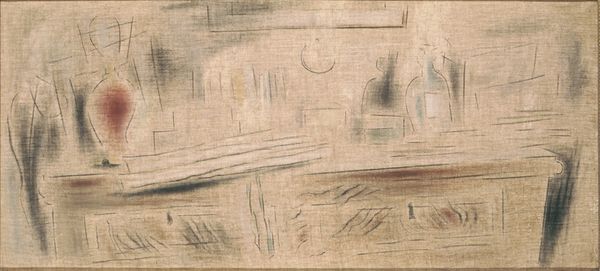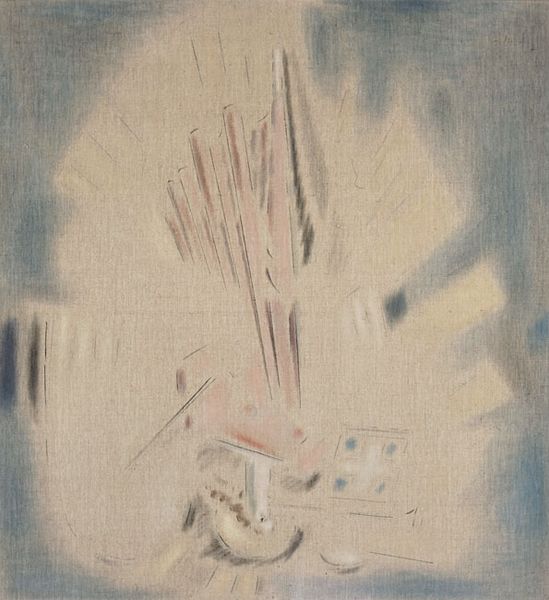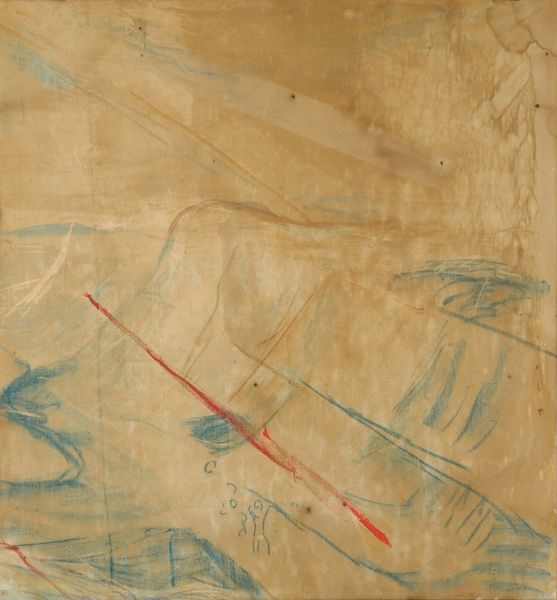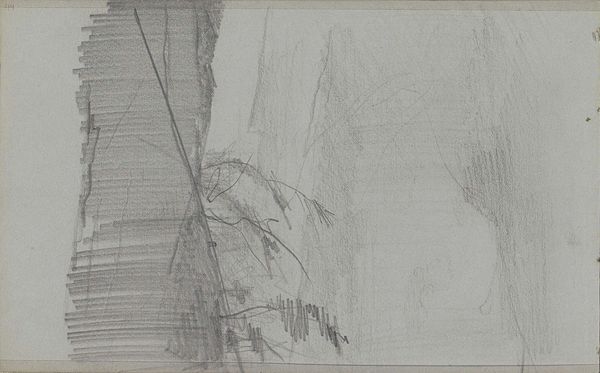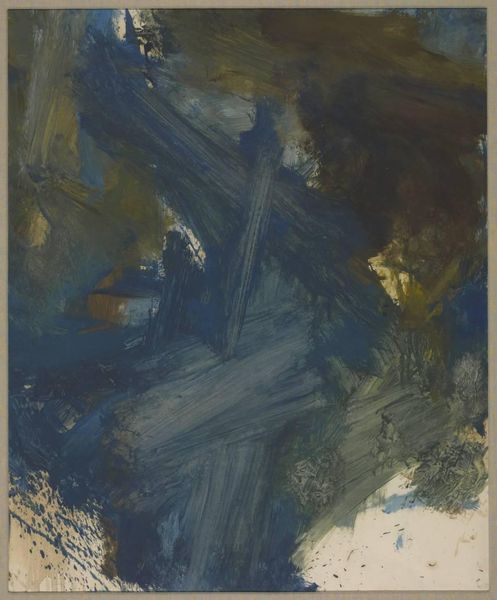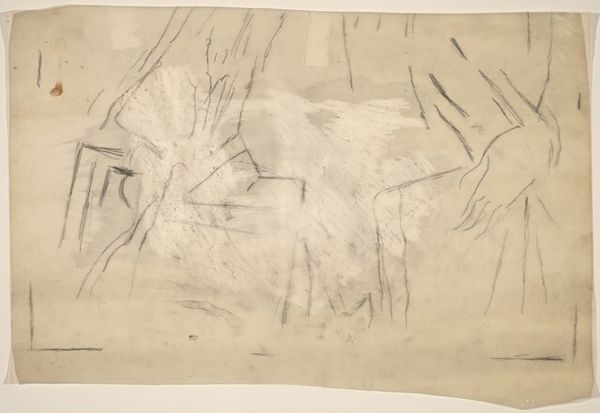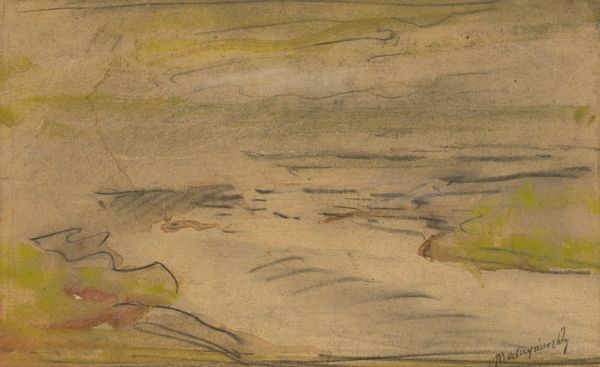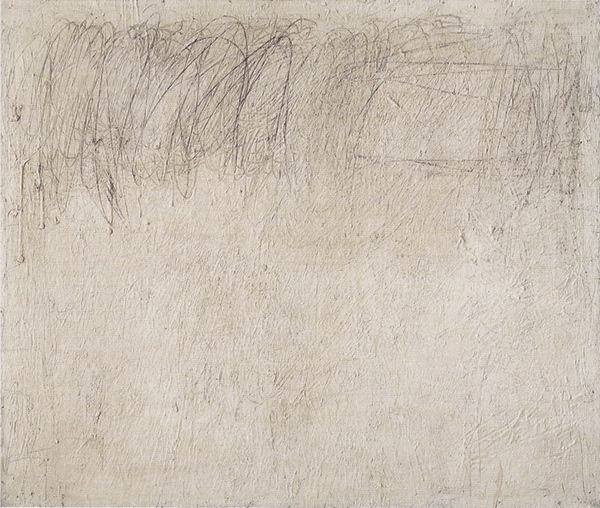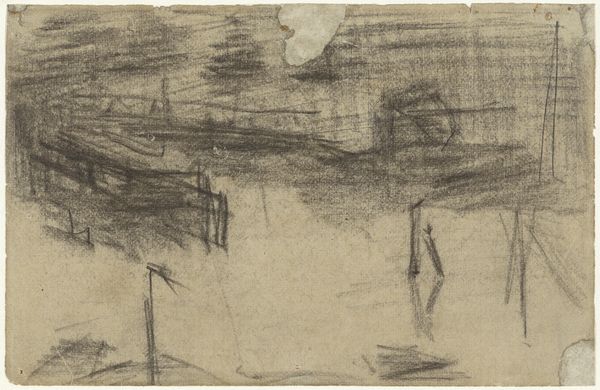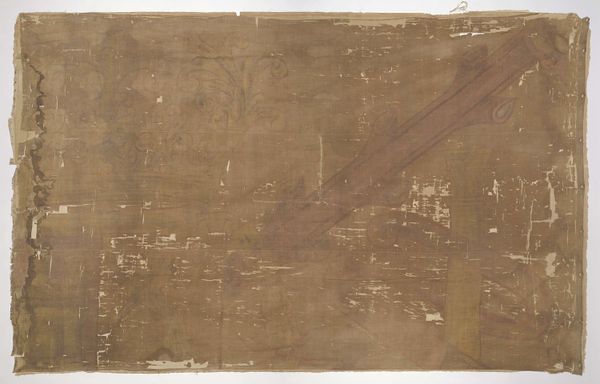
Allegorical Composition
0:00
0:00
konstantinosparthenis
National Art Gallery (Alexandros Soutzos Museum), Athens, Greece
drawing, pencil
#
drawing
#
abstract painting
#
geometric
#
pastel chalk drawing
#
pencil
#
abstraction
#
line
#
watercolor
Dimensions: 71 x 785 cm
Copyright: Konstantinos Parthenis,Fair Use
Editor: This is "Allegorical Composition" by Konstantinos Parthenis, a drawing created with pencil, pastel chalk, and watercolor. There isn't a specific date associated with it. Looking at it, I am struck by how muted the colours are, almost ghostly. The geometric shapes seem to hover on the canvas, and I'm curious about how Parthenis achieved that effect. What can you tell me about it? Curator: It’s crucial to look at the materiality of this drawing – the visible texture of the canvas and the blending of media like pencil, pastel chalk and watercolor, it makes me think of the labour-intensive process required to make this kind of ethereal artwork. The blending suggests Parthenis was interested in dissolving boundaries between traditional drawing and painting. What does that say about his consumption and creative needs in post-war Greece? Editor: That's interesting, that he was pushing those boundaries. I hadn't really considered the "labour" involved. What does that blending of techniques tell us? Curator: Look at how the pencil creates the skeletal structure, and pastel softens the forms while watercolour washes and blurs everything. The application of different media is itself an artistic statement! Is it intentional subversion, or an effort to reach broader audiences by blending craft with high art traditions? Also notice that by integrating 'craft' tools he elevates these materials. What meaning do you derive from his focus on this "low" type of labour? Editor: It could be a commentary on elevating the everyday… challenging what’s considered 'worthy' of art. Are the muted colours related to this choice of materials? Curator: Perhaps the accessibility and affordability of pencil, pastel, and watercolor played a role – democratizing the art-making process. Also, let's remember the cultural and socioeconomic context. What resources would have been available, what traditions were common? The means of production shape the message. Editor: So by focusing on the 'how' of the artwork, we see a social commentary embedded in the piece itself. I guess I hadn’t looked closely enough. Curator: Exactly! The ‘how’ is inextricably linked to the ‘why’. We see past the aesthetic appreciation and can engage with a broader meaning tied to production and cultural values.
Comments
No comments
Be the first to comment and join the conversation on the ultimate creative platform.
